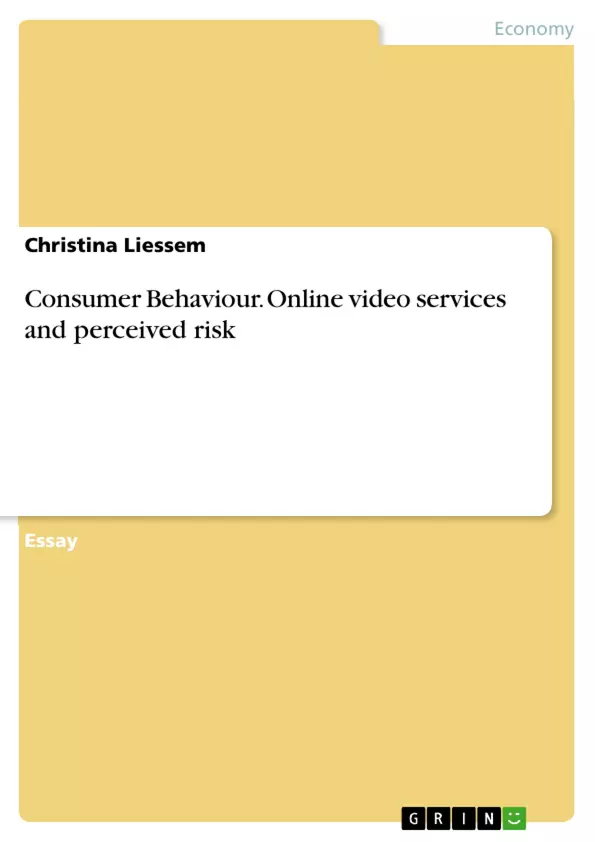“Rollout of HD VOD and Internet movies on day-and-date of DVD release is a growth opportunity not only because consumers value them and will pay more, but also because this
expanded availability will increase overall movie viewership. The Oliver Wyman study found that that these enhanced offers would lead U.S. consumers to watch and pay for an average of three more movies per year than they do today, creating a net annual increase in domestic consumer movie spending of more than $5 billion, from the current base of $50 billion.”
As this study of the management consultancy Oliver Wyman reveals, online video services such as VOD and PPV gain an increasing importance nowadays. These trends towards online video services (OVS) invite to a closer examination of the consumer behaviour regarding these services.
This essay focuses on consumer behaviour of the consumption of OVS, such as iTunes Movies and CinemaNow. In particular the aspect of perceived risk will be examined, because these products can only be consumed online, an environment where the perceived risk is still high and a possible barrier for the usage of OVS.
Inhaltsverzeichnis (Table of Contents)
- Introduction
- Online video services
- Consumer Behaviour towards online video services
- Literature Review - Perceived Risk in Online Shopping
- Perceived Risk
- Perceived Risk in e-Commerce
- Implications
- Theoretical
- Managerial
- Public Policy
- Marketing Plan
- References
Zielsetzung und Themenschwerpunkte (Objectives and Key Themes)
This essay examines consumer behaviour regarding online video services (OVS), particularly focusing on the aspect of perceived risk. The work aims to provide a comprehensive understanding of the consumer behaviour of OVS, with a special emphasis on the challenges posed by the perceived risk in online environments. The essay aims to contribute to the understanding of OVS consumption by exploring the key aspects of perceived risk and its implications for both theoretical and managerial perspectives, as well as public policy.
- Consumer behaviour towards online video services
- Perceived risk in online environments
- Theoretical and managerial implications of perceived risk
- Public policy implications of perceived risk in OVS
- Marketing strategies for OVS providers
Zusammenfassung der Kapitel (Chapter Summaries)
The first chapter introduces the topic of online video services (OVS) and highlights their growing importance in the media landscape. It emphasizes the need for a deeper understanding of consumer behaviour in relation to these services, particularly considering the role of perceived risk. The second chapter delves into the specifics of OVS, differentiating between legal and illegal providers and highlighting the various business models employed. It also discusses the potential barriers faced by consumers when choosing legal OVS options, including technical limitations, registration requirements, and concerns about online security. Chapter three provides a brief overview of consumer behaviour, specifically focusing on demographics and the various motivations behind the consumption of OVS. This chapter also introduces the concept of segmenting consumers based on demographic factors to tailor marketing strategies accordingly.
Schlüsselwörter (Keywords)
This essay examines the consumer behaviour of online video services (OVS), focusing on perceived risk as a significant factor influencing consumer choices. Key themes include consumer behaviour towards online video services, perceived risk in online environments, theoretical and managerial implications of perceived risk, public policy implications of perceived risk in OVS, and effective marketing strategies for OVS providers. The essay explores various aspects of consumer behaviour, such as demographics, motivations, and decision-making processes related to online video consumption. It also delves into the specific challenges posed by perceived risk in online environments, examining its impact on user adoption and potential strategies for mitigation.
- Arbeit zitieren
- Diplom-Kauffrau / MSc Christina Liessem (Autor:in), 2011, Consumer Behaviour. Online video services and perceived risk, München, GRIN Verlag, https://www.grin.com/document/283947



